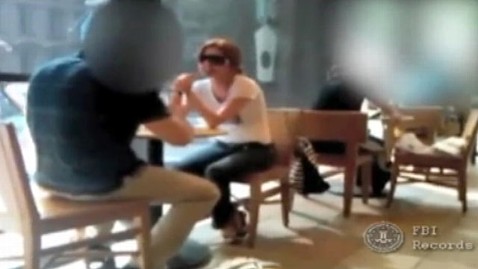How the FBI Busted Anna Chapman and the Russian Spy Ring

(Federal Bureau of Investigation/ABC)
ABC News’ Pierre Thomas, Jack Cloherty and Jason Ryan report:
Anna Chapman is a television star and lingere model back in Moscow now, but before she and other Russian spies were caught by the FBI last year, they came dangerously close to accomplishing a portion of their undercover mission in the United States.
“This group was well on their way to penetrating foreign policy circles. They had befriended a friend of a sitting Cabinet official,” FBI Counter Intelligence Assistant Director Frank Figliuzzi said. “They wanted to get their hands on the most sensitive data they could get their hands on, but we took this thing down before classified information changed hands.”
In a wide-ranging interview with ABC News, Figliuzzi said the red-headed Chapman was much more than a seductive “femme fatale.”
“This is a highly-trained intelligence officer — Chapman is new breed of illegal operative,” Figliuzzi said, describing her as “tech savvy” and capable of spying in plain sight. Chapman and her comrades were “the cream of the crop, handpicked out of the Russian intelligence academy, because of their fluency in languages, and their ability to acclimate into another society,” he said.
FBI hidden camera surveillance videos of the spies’ operations give a fascinating look into Russian spy tradecraft as employed by Chapman and the other Russian agents. The videos show, among other things, the Russian infiltrators hiding messages under bridges, secretly trading information, money and contact information via “brush passes,” and digging for buried payoff money in the woods.
The videos were released by the FBI Monday in response to a Freedom of Information request filed by ABC and other news organizations. While Chapman and her fellow spies seemed to live routine, middle-class lives, the videos reveal both traditional and hi-tech spy techniques, including Chapman sending encrypted messages to her handler with a specially equipped laptop. In one of the FBI surveillance tapes, Chapman is in a department store, transmitting messages to her contact standing outside the store.
“We were able to capture wirelessly the communications between her and her handler,” Figliuzzi said. “There were six locations throughout New York,” that Chapman used, he said. “She transmits and receives messages from the official who is in close proximity but not anywhere near visibly close to her … she is transmitting encrypted code that the FBI was able to break.”
Because they broke the code, the FBI was able to place an informant into the spy ring. At one point, Chapman even hands her laptop over to the informant so he can fix some technical problems she was having. She didn’t know, of course, she was having trouble with her laptop because of measures taken by the FBI. The FBI dubbed the operation that caught Chapman and her colleagues “Ghost Stories,” because many of the Russian spies assumed the stolen identities of dead Americans.
“We were dealing with the most sophisticated cadre the Russians could put here,” Figliuzzi said.
All of its members spoke fluent English, many had attended U.S. colleges or graduate schools, and some married each other, had children, and assumed American middle class lives, all the while searching out top level contacts U.S. policy making.
“What we have learned here is the absolute resolve of a foreign intelligence service to penetrate U.S. foreign policy circles,” Figliuzzi said, adding that the Russians were in it for “the long haul — they were patient enough to wait decades to achieve their objective.”
The Cold War, he added, did not mean the end to the “Spy vs. Spy” mentality between the United States and Russia.
“The public needs to know this threat continues,” Figliuzzi said. “Spying has been with us since the Old Testament; spying is with us now.”